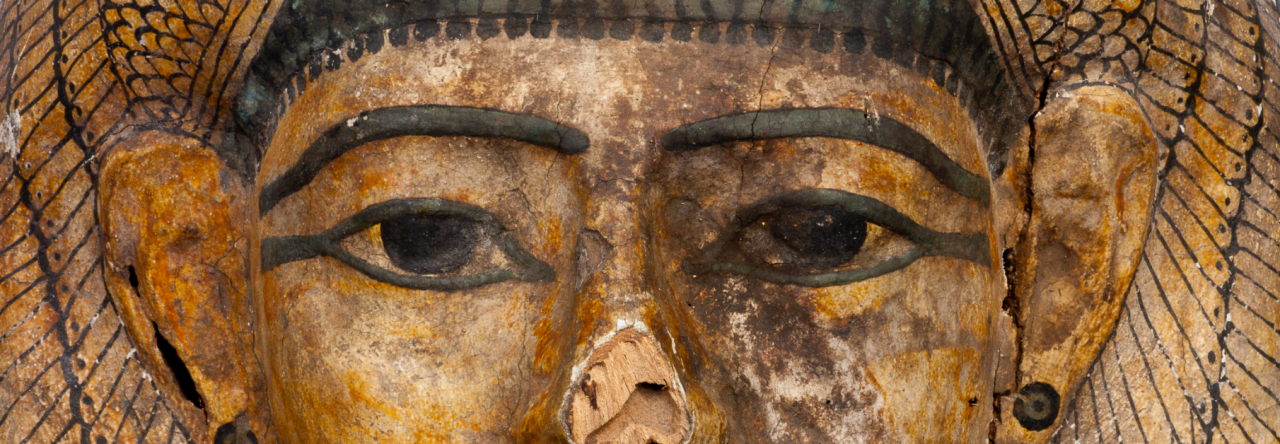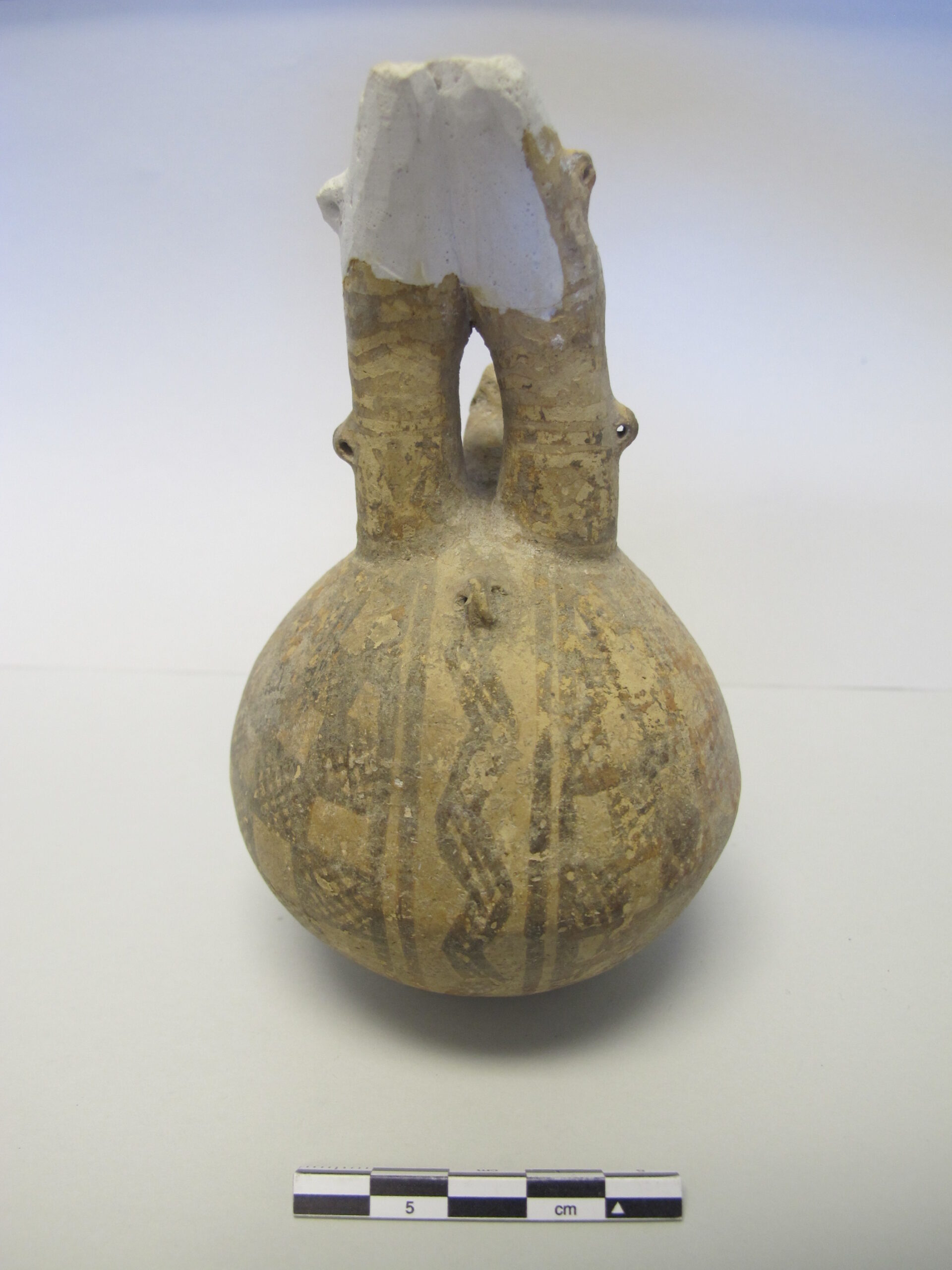For a 3D model made by the Virtual Curation Lab at Virginia Commonwealth University, see https://skfb.ly/owuKo
Double-spouted juglet
AWG0000.01.16
Aegean, Cypriot
Bronze Age; Middle Cypriot II (1800-1725 BCE)
Material: Ceramic
Technique: White-painted ware
Style: Stringhole style
Weight: 113g
Dimensions: 12.5 cm, maximum diameter 7 cm
Conservation: Good - mouth partly restored with white plaster
Provenance: Unknown
Source/donor: Unknown
Date of acquisition: Pre-1939, probably part of the Richmond College Museum collection
Other notes: The inventory number beginning with R suggests that it was part of the Richmond College Museum collection. Other R-numbered items were displayed in the Biology Museum in Maryland Hall beginning in 1932. This piece may possibly be identified in the 1939 photo of the Biology Museum, on the shelf to the left of the lydion R6022 and the lekythos R6023.
Research by: Lindsey Stevens ‘23
Detailed description of form/shape:
This juglet has a spherical round body and flat base. From the top of the sphere two tubular spouts, adjacent and connected to one another at the top, extend upwards. The spout mouths are angled at the top, for easy pouring. (This type of spout is often called beak-shaped, and jugs with spouts like this are known as beak-spouted.) On the side opposite the taller tips of the spouts is an arched vertical loop handle, with a tiny lug projecting from the top of the arch. A small hole in the lug would have held a string. Seven other small lugs pierced with string holes occur around the shoulder, neck, and handle.
Detailed description of decoration:
Black-brown to reddish-brown on buff fabric; cross-hatched squares in checkerboard pattern surround body of vase, except for a vertical zig-zag band, filled with diagonal hatch-lines and bordered by two straight vertical bands on the front; straight bands in cross motif on the circular base.
Comparanda:
For the general shape and decoration, though with single spouts, compare Anson and Hubbard 2000, nos. 22 and 23 (no. 22 has a similar cross motif on the base); an example in the Cyprus Museum, Nicosia (with checkerboard pattern covering the body); Museum of Cycladic Art, Athens, no. Ζ0097 (with cross-hatched designs); University of Pennsylvania Museum 32-27-89 (with cross-hatched triangles); and Metropolitan Museum of Art no. 74.51.1154 (with zig-zag band). Double-spouted juglets are mentioned in a dissertation on this style of pottery (Gagne 2012, 103-104) but are less common than the single-spouted type. For a double-spouted jug in a different fabric and style of Middle Cypriot pottery, see the Red-Polished Ware jug British Museum 1871,0210.1.
Discussion:
This small, double-spouted juglet exemplifies the ‘Stringhole Style’ of Middle Cypriot White Painted Ware with Geometric decoration. It was most likely used to carry small amounts of oil or wine. The tiny holes around the shoulder, neck, and handle once held string(s) for suspension. The double spout is very rare. Other juglets similar to this one usually have only one spout. The duplication of the spout probably served aesthetic rather than functional purpose.
Bibliography:
Anson, D. and Hubbard, B. 2000. Cypriote Pottery in New Zealand Collections (Corpus of Cypriote Antiquities 19, SIMA vol. XX: 19). Jonsered: Paul Aströms.
Gagné, Laura Ann Campbell. 2012. “Middle Cypriot White Painted Ware: A Study of Pottery Production and Distribution in Middle Bronze Age Cyprus.” PhD thesis, University of Toronto.
“Jug | Museum of Cycladic Art.” Accessed October 1, 2021. https://cycladic.gr/en/exhibit/z0097-prochous?cat=kipriakos-politismos.
Murray, Fergus. 2019. “XI: Buying and Selling Cyprus’ Past.” Junglocracy. Fergusmurraysculpture.Com. Accessed October 1, 2021. http://www.fergusmurraysculpture.com/cyprus/history-notes-12-pages/xi-buying-and-selling-the-past/.
“Terracotta Juglet | Cypriot.” Metropolitan Museum of Art. Accessed October 1, 2021. https://www.metmuseum.org/art/collection/search/240741.



